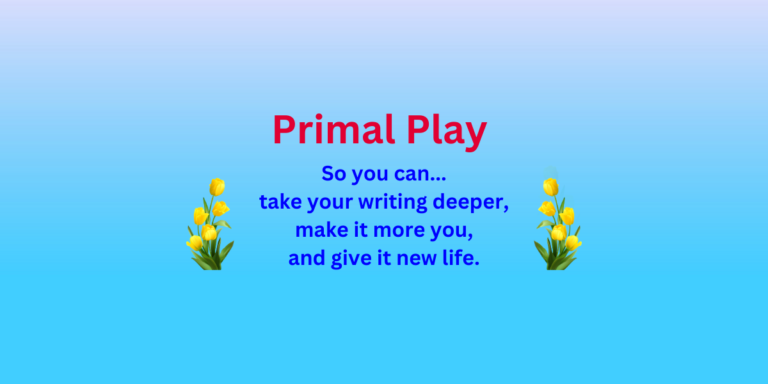2.2 Forget pantsing vs. plotting, try partnering
How often have you heard this? You’re either…
A pantser.
Which means you write by the seat of your pants, with no planning or strategizing.
Or you’re…
A plotter.
Which means you outline first and then write in strict adherence to your outline.
You’ve only got two options, so you’re supposed to pick one and join that tribe. But the problem with tribes is that they can get adversarial and unfriendly, like when…
Born–again plotters call pantsers flighty and tangential.
Or…
Proud pantsers call plotters pedestrian and stodgy
Truth is, there’s a big problem with either approach to writing.
If you do pure pantsing…
You can write 40,000 words of your novel and suddenly hit the wall because you have no plan for what comes next. You find yourself down a dead–end street. You can’t find a way to take your story through to a resolution.
So you quit. Or you force an ending which your readers find unsatisfying.
If you do pure plotting…
You can write a whole novel with an intellectually pleasing structure, but it’s so carefully controlled that it turns out emotionally flat.
So your readers feel disappointed. And won’t read a second novel if you ever write one.
Now, to indulge the skeptical part of myself, let me ask this…
Are there really any pure types?
One day, as I was watching a video of a happy pantser preaching his gospel, I kept noticing that he had an intuitive sense of structure, so was he really just pantsing?
The next day I watched a video of a dedicated plotter, but she kept slipping in comments about getting surprised as she wrote out her scenes, which meant she had to adjust her outline. And finally she said the ending of her novel was not what she originally planned. So was she really just plotting?
Eric Edson, in his book on screenwriting, The Story Solution, says that every successful film has 21–23 Hero Goal Sequences, which each have their set place in the structure of the film. I like this book. I’ve read it more than once. And I’ve watched some of Edson’s videos on YouTube. I’ve learned a lot from him, but…
Every film follows the same template? Really?
I can easily think of some successful films that have a lot of the elements Edson illuminates, but they have their own structure.
So now here’s my question. Given that we’re writers, given that we’re creative…
Why can’t we do both pantsing and plotting?
Why can’t we put the two of them together and do…
Partnering.
Why settle for being half a writer?
Maybe right now you’re better at one or the other. So what? You can engage in strategic practice and get really good at both. You’re a developmental being, so you can do that—develop.
Of course, there are lots of different kinds of writers doing different kinds of writing, so not everyone needs both abilities.
For example, if you’re doing technical writing, you need to be excellent at structure. You outline your chapters and then fill them in following your plan to the letter. And this works because you’re just delivering information.
Even then, maybe a bit of surprise and personality might add a nice touch to your book.
But it seems to me if you’re doing writing of any depth, there’s a principle that holds true…
The more there is to you as a writer, the more there is to your writing, and therefore the more you’re able to give to your readers
I like to outline my books. If I’m going to invest a couple years, I want to know there’s something there that’s going to be worth my time.
But as I outline, I keep surprising myself and making revisions. My outline stays fluid. So…
Am I pantsing my plotting?
Of course I have a deep sense of my message, and that gives my writing coherence. I’m not wigging out on dozens of tangents. So…
Am I plotting even as I’m doing my pantsing?
The image I keep in mind when I’m writing is…
Partner dancing.
Spontaneity and structure are the partners…
First one leads, then the other.
Sometimes one leads for a day or a week.
Sometimes they are trading the lead back and forth in a matter of minutes.
And sometimes, it’s impossible to tell who’s leading and who’s following, because they’re both so deep in it together.
Now, what about you? What image personifies your writing process?
PS:
Corey Mandell, a top–level writing teacher in Hollywood, talks about the difference between intuitive writers, who write from the inside out, and conceptual writers, who write from the outside in.
He says to write a great screenplay you need both abilities. So he developed a challenging, disciplined program to make sure intuitive writers get good at conceptual skills and conceptual writers get good at intuitive skills. He calls this “creative integration.”
Here’s a link to him explaining this in a lively Film Courage interview:
https://www.youtube.com/watch?v=hZgWw5juPJ8&t=18s
This interview is almost two hours long, but the key part about creative integration is in the first 22 minutes, including where he talks about being able to write mostly in a state of flow.
2.3 From repetition compulsion to strategic practice to primal play

